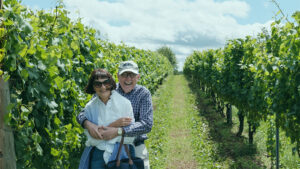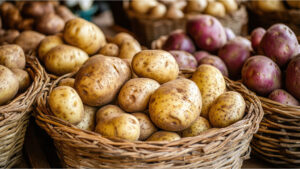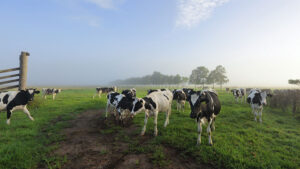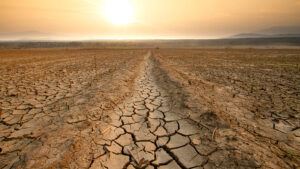Take a drive in Australia during summer and you’ll see a common sight on dairy or beef or sheep farms – animals sheltering under the few available trees.
With our climate warming every year, trees play a vital role in keeping temperatures down. The temperature under a tree can be 11°C to 25°C cooler than exposed land nearby.
As some farmers have discovered, there’s an alternative to trees that has surprising benefits. Solar panels and farm animals make ideal companions in the field. Sheep are especially suited to sharing paddocks with solar panels. When panels are elevated 1.5 to 2 metres above ground, there’s room for sheep to shelter and graze underneath.
Last year, ABC interviewed several central New South Wales wool growers who have allowed Merino flocks to graze under solar panels. The result has surprised all farmers involved. They’re getting better quality of wool, and more of it.
Wool broker Graeme Ostini reports that he’s cutting an amazing quantity of wool from the sheep on his Parkes property – in the top 5% for the district.
Renew Economy interviewed another Parkes farmer, Ken Keith, in February. He says that one benefit of solar panels is that they provide shelter for his sheep – keeping their wool dry on wet days and keeping the sheep cooler on hot days. He says that the wool he’s getting is the best yield and quality he’s grown in his lifetime.
Dubbo grazier Tom Warren has also recorded an increase in wool quantity and quality. He notes that water condensation from the solar panels drips to the soil below. This results in better grass coverage. Because of the extra grass, he can run 25% more sheep per hectare. The wool he’s cutting is cleaner, and freer of burrs and dust.
The benefits work both ways. Sheep keep vegetation under control, which helps keep the solar panels working efficiently.
Other farm animals aren’t so well suited to solar. Cattle and horses are considered too big. However, trials in France might change this. Goats eat the wiring – which obviously isn’t ideal for a solar farm. But sheep have proved to be perfect.
Now, studies reveal that certain crops thrive when partly shaded by solar panels. In Canada, crops such as lettuce, corn, tomatoes, potatoes and even wheat have produced higher yields when protected by solar panels. In South Korea, farmers are growing broccoli under panels.
In Africa, solar panels have allowed farmers to cultivate land that was previously unviable. The panels protect vegetables from heat stress and water loss. In Kenya, this practice has been likened to harvesting the sun twice.
Farmers who have been early adopters of agrivoltaics (the name for combining solar farming and agriculture) describe it as a win-win move.
We’re big believers in innovation at IIF. It’s only a matter of time before we offer our members produce from an agrivoltaic farm.
Sources:
Australian Broadcasting Commission
Australian Government Clean Energy Regulator
Renew Economy
New Scientist
World Economic Forum




